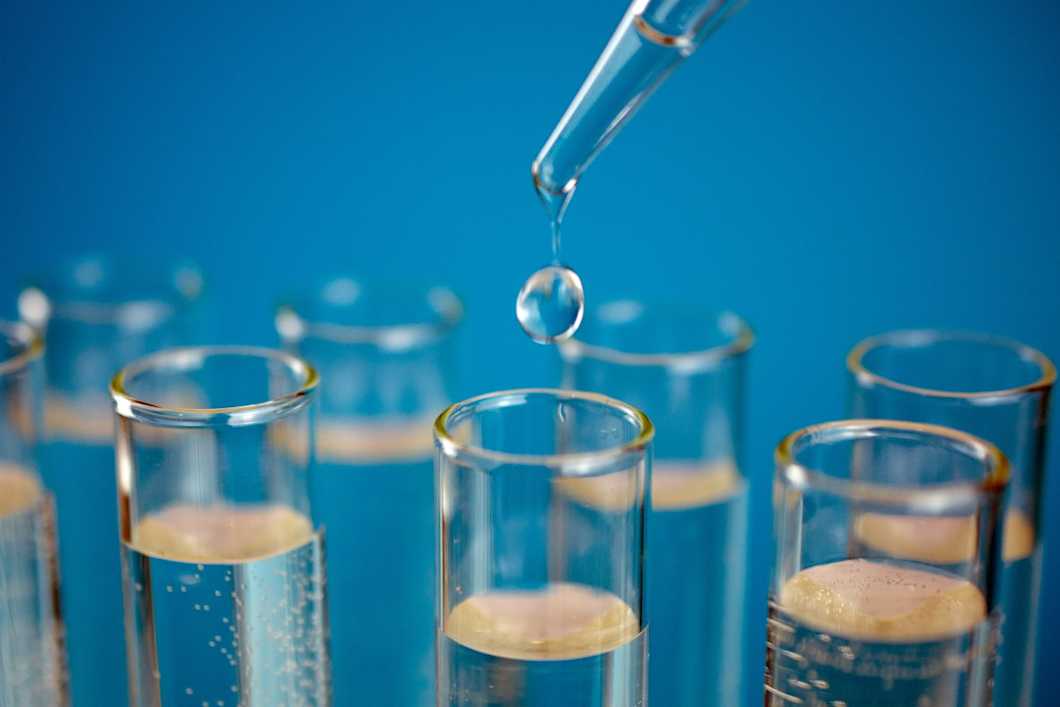UPLC-MS analysis
Ultra-performance liquid chromatography–mass spectrometry (UPLC-MS or UHPLC-MS) is a highly accurate analytical technique that excels in areas including food analysis, toxicology, and biological assays.

Some of our UPLC-MS services
Vitamin B1 (thiamine) in food and dietary supplements
Vitamin B2 (riboflavin) in food and dietary supplements
Melatonin content in dietary supplements
Vitamin B7 (biotin) in food and dietary supplements
Vitamin B3 (niacin) in food and dietary supplements
PFAS in solid and liquid chemicals
Glycoalkaloids in potatoes and potato products
PFAS in whole blood, plasma, or serum
Prices excluding VAT.
What is UPLC-MS used for?
UPLC-MS is used to determine the contents of complex chemical solutions with high precision and accuracy. One common application is food industry quality control, where UPLC-MS and UPLC-MS/MS can be used to determine food products' amino acid profile and vitamin content.
The method can also be used for assessing the safety of food contact materials regarding the release of primary aromatic amines (PAA). It can detect PAAs with a detection limit of 0.002 mg/kg. Pharmaceutical and environmental samples can also be screened for various types of contaminants.
How does UPLC-MS work?
The operating principle of UPLC-MS is the same as that of traditional LC-MS analysis, combining liquid chromatography separation of components with detection using mass spectrometry. The chromatography column used in UPLC-MS does, however, use smaller particles and thus tolerates higher pressures. This improves the method’s speed, resolution, and sensitivity.
Suitable samples and sample preparation
UPLC-MS samples need to be dissolved in a very high-purity solvent to reduce the risk of contamination, which could affect the quality of results. Larger biomolecules may need an additional digestion phase to ensure that they fully disperse into solution prior to analysis.
UPLC-MS/MS
In UPLC-MS/MS analysis (also known as UPLC tandem mass spectrometry), the sample is passed through two mass spectrometers in succession. This provides more in-depth data and is especially useful for analyzing large complex biomolecules by splitting them at multiple stages. It is also possible to add additional mass spectrometers to the setup.
UPLC-MS vs. HPLC-MS
High-performance liquid chromatography-mass spectrometry (HPLC-MS) is a predecessor technique to UPLC-MS. It uses larger particles as the stationary phase in the separation column and therefore tends to produce a less effective separation. It also operates at a lower pressure, and the analysis is thus more time-consuming than UPLC-MS. However, HPLC is a cheaper technique to set up and requires less expertise to operate, so it may be preferred in situations where the resolution it provides is adequate.
Need UPLC-MS analyses?
Measurlabs offers laboratory testing with UPLC-MS and other LC-MS methods. We are committed to delivering the highest quality analyses with short turnaround times even for batches of hundreds of samples. Our testing experts are always available to help you with any questions regarding method selection or result interpretation. Contact us through the form below to get a quote and start the discussion.
Suitable sample matrices
- Organic mixtures
- Amino acids
- Biomolecules
- Pesticides
Ideal uses of UPLC-MS
- Analysis of amino acids
- Testing for toxins
- Identifying pesticides
- Pharmaceutical testing
Ask for an offer
Fill in the form, and we'll reply in one business day.
Have questions or need help? Email us at info@measurlabs.com or call our sales team.
Frequently asked questions
When compared with conventional liquid chromatography techniques, UPLC-MS offers improved sensitivity and is also faster to perform.
The equipment used in UPLC-MS is relatively expensive and requires a high level of expertise to operate.
Measurlabs offers a variety of laboratory analyses for product developers and quality managers. We perform some of the analyses in our own lab, but mostly we outsource them to carefully selected partner laboratories. This way we can send each sample to the lab that is best suited for the purpose, and offer high-quality analyses with more than a thousand different methods to our clients.
When you contact us through our contact form or by email, one of our specialists will take ownership of your case and answer your query. You get an offer with all the necessary details about the analysis, and can send your samples to the indicated address. We will then take care of sending your samples to the correct laboratories and write a clear report on the results for you.
Samples are usually delivered to our laboratory via courier. Contact us for further details before sending samples.